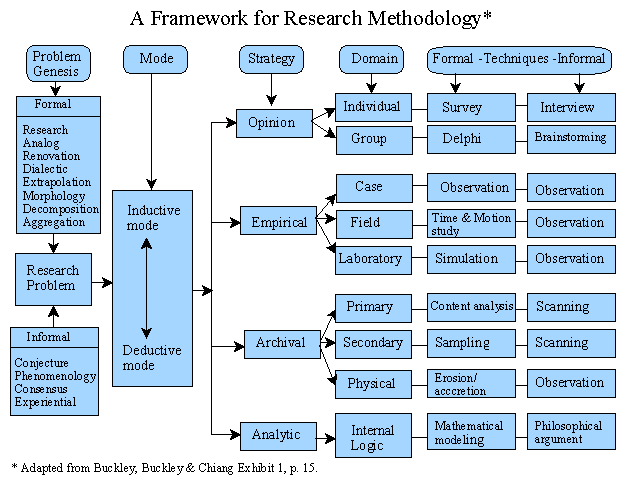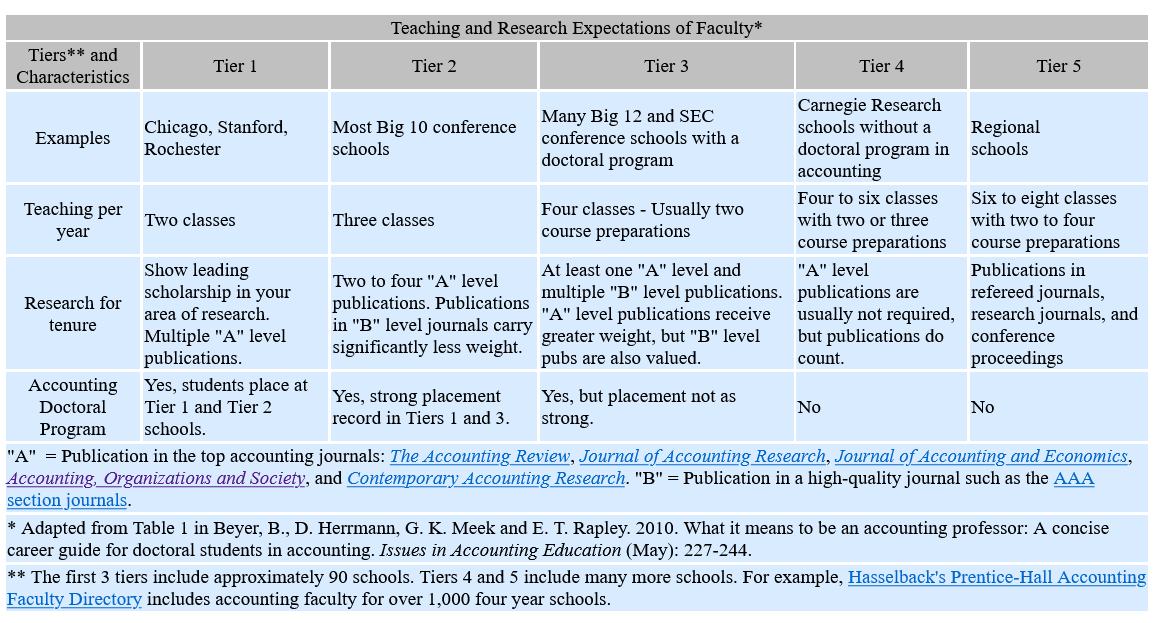
Summary by James R. Martin, Ph.D., CMA
Professor Emeritus, University of South Florida
Advice
for Ph.D. Students and New Faculty | How to Management Yourself Main Page
The purpose of this paper is to provide a career guide for doctoral students in accounting. It is divided into three main sections: Foundational Guidance, Research Guidance, and Publishing Guidance.
Foundational Guidance includes the following subsections:
Research areas and research methodology,
Seminal contributions to the accounting literature,
Time management, Collegiality, and
Faculty research and research expectations.
According to a prior study 49 percent of accounting research is related to financial accounting, 20 percent involves management accounting topics, 14 percent pertains to auditing, 10 percent is tax related, and 5 percent is in the area of information systems.
Research methodologies used for accounting research include archival research (56 percent), behavioral research (23 percent), experimental research (12 percent) and analytical research (9 percent).1
The authors recommend seminal contributions to accounting literature as foundation reading for doctoral students and provide an appendix for those papers. In the time management section they emphasize self discipline indicating that freedom with time is not free time. They also emphasize the importance of collegiality, e.g., providing others with feedback on their research.
The last section under foundation and guidance includes a discussion of faculty teaching and research expectations. The following table summarizes that discussion. Note that the first 3 tiers only include about 90 schools, so there are a fairly large number of colleges in tiers 4 and 5. As noted in the table below, Hasselback's 2013-2014 Faculty Directory includes accounting faculty for over 1,000 four year schools. Also note that teaching expectations vary from 2 classes per year for faculty at the top research schools to 8 classes per year for faculty at tier 5 schools. Research expectations are considerably higher at the tier 1 and tier 2 schools with lower expectations at tier 3, 4, and 5 tier schools.

Research Guidance
The authors begin this section by saying that research is the currency of academics. This is because of the scarcity of research talent in relation to teaching talent, and the fact that research is peer reviewed.
In a subsection related to generating research ideas they mention the Social Sciences Research Network as a source of current research papers and recommend reading papers in related areas such as finance. Ideas for research come from many sources including reading research papers and the financial press, and talking with practitioners, colleagues and students. The difficult part is not generating ideas, but deciding which ideas to pursue, i.e., ones that will result in a productive research stream.
The authors also recommend developing a considerable amount of depth in a particular research area noting that there are economies of scale when you focus on a single research area. They also argue that you should force yourself to write and make research a priority.
Before seeking a academic position at a research university a new Ph.D. needs a research pipeline, i.e., perhaps three or four working papers, typically from his or her dissertation.
Publishing Guidance
This section includes comments related to selecting a Journal for your publications, formatting the papers, the review process, and celebrating your success.
____________________________________________
1 The research methods mentioned in this paper are narrowly defined as archival, behavioral, experimental, and analytical. For an expanded discussion of research methodology see MAAW's research methods section, particularly the publication by Buckley, Buckley and Chiang. A sample graphic adapted from this publication appears below.

___________________________________________________
Related Summaries:
AACSB International. Salary Survey Reports: Executive Summary. AACSB. (Note).
Bennis, W. G. and J. O'Toole. 2005. How business schools lost their way: Too focused on "scientific" research, business schools are hiring professors with limited real-world experience and graduating students who are ill equipped to wrangle with complex, unquantifiable issues - in other words, the stuff of management.". Harvard Business Review (May): 96-104. (Summary).
Bishop, C. C., D. M. Boyle, R. R. Clune and D. R. Hermanson. 2012. A different model for doctoral education in accounting and auditing: Student and faculty reflections. Current Issues in Auditing 6(1): A1-A16. (Note).
Boyle, D. M., B. W. Carpenter, D. R. Hermanson and M. O. Mensah. 2013. The accounting doctorate shortage: Opportunities for practitioners. Strategic Finance (May): 30-36. (Note).
Gary, R. F., C. A. Denison and M. L. Bouillon. 2011. Can obtaining an accounting Ph.D. provide a positive financial return? Issues in Accounting Education (February): 23-38. (Summary).
Grasso, L. 2008. The accounting Ph.D. shortage: Crisis or opportunity? Cost Management (March/April): 15-25. (Note).
Hopwood, A. G. 2008. Management accounting research in a changing world. Journal of Management Accounting Research (20): 3-13. (Summary).
Kaplan, R. S. 1983. Measuring manufacturing performance: A new challenge for managerial accounting research. The Accounting Review (October): 686-705. (Summary).
Kaplan, R. S. 1993. Research opportunities in management accounting. Journal of Management Accounting Research (5): 1-14. (Summary).
Kaplan, R. S. 1998. Innovation action research: Creating new management theory and practice. Journal of Management Accounting Research (10): 89-118. (Summary).
Martin, J. R. Not dated. The accounting doctoral shortage and opportunities to teach accounting. Management And Accounting Web. (Accounting Doctoral Shortage).
Martin, J. R. Not dated. AACSB International Salary Survey Reports: Executive Summary. AACSB. Management And Accounting Web. (AACSB Salary Reports).
McNair, C. J. and B. Richards. 2008. Unintended consequences: Death of the teacher-scholar. Cost Management (January/February): 21-28. (Summary).
Meyer, M. J. and P. L. Titard. 2000. Those who can ... teach. Want to exchange your Palm Pilot for a blackboard, get a PhD and go back to college as a teacher? The time to do it is now. Journal of Accountancy. (July): 49-58. (Note).
The Pathways Commission. 2012. The Pathways Commission on Higher Education: Charting a National Strategy for the Next Generation of Accountants. American Accounting Association and American Institute of CPAs. (Note).
Trapnell, J. E., N. Mero, J. R. Williams and G. W. Krull, Jr. 2009. The accounting doctoral shortage: Time for a new model. Issues in Accounting Education (November): 427-432. (Note).